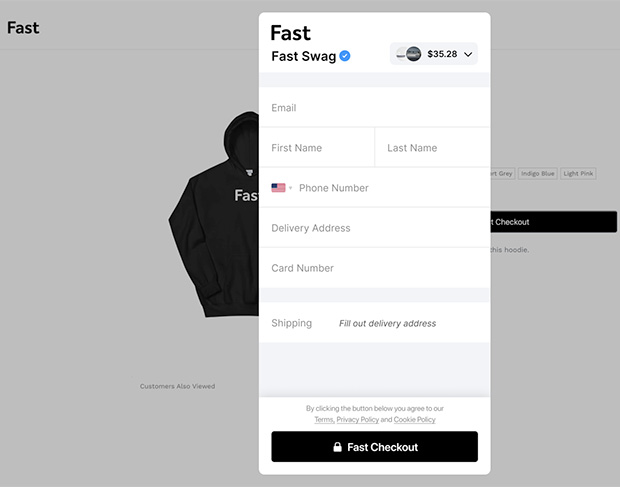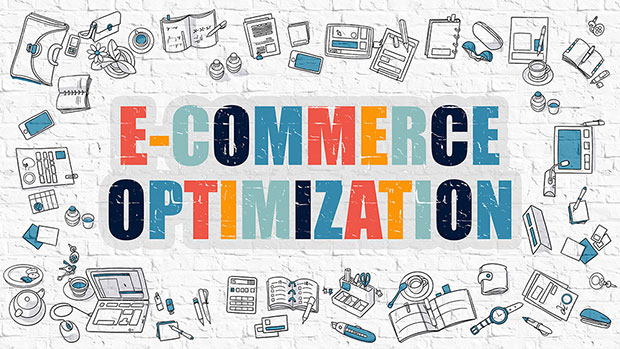Online consumers have voted with their fingers what they think of e-commerce websites that provide a poor experience. In exchange for a less than satisfactory buying experience, shoppers are abandoning their digital shopping carts to show their displeasure.
Fast — a shopping and checkout platform for e-commerce sites — released survey results in June that found consumers want a better online shopping process and are abandoning their shopping carts at record levels.
Eighty-six percent of more than 1,000 U.S. shoppers ages 18 and older who responded to the survey taken June 2 to 4 said they had added an item to their online shopping cart, only to abandon it before checking out.
Abandoned shopping carts might well be the canary in the coal mine for e-commerce sites losing sales because they failed to provide online shoppers with an efficient shopping experience.
Analysts expect e-commerce revenue to reach $930 billion this year. They also predict 2022 will be the first trillion-dollar year for online shopping.
Yet, the new Fast data found consumers report multiple obstacles that lead to abandoned shopping carts. Aside from addressing existing CX issues voiced by consumers, e-tailers might find providing their customers with better shopping experiences comes easier with new technology based on headless checkout, suggests Allison Barr Allen, COO and co-founder of Fast.
“By using a headless checkout solution, retailers are able to convert any digital screen into an opportunity to buy products and engage with shoppers. The future opportunity created with headless checkout is untapped,” she told the E-Commerce Times.
Makes Shopping, Paying Easier
While working out or watching a shopping event, consumers can easily buy the outfit the instructor is wearing, or buy the products their favorite influencer is promoting. That is what the headless checkout experience is creating.
Fast’s headless e-commerce system is different than other payment methods for quite a few reasons. Most payment methods today only appear on the cart page after a shopper added everything to the cart. Typically, those payment systems are just processing the payment.
Fast’s platform is a full checkout solution that integrates with websites and e-commerce. This process brings in shipping information right away to create a better end-to-end experience.
“We are in the early days of building this data center repository and the much more granular-based purchasing process across the internet to a level that will help us provide better and different e-commerce experiences over time,” Allen explained.
In its simplest form, Fast provides the answer most anticipated by e-tailers. That is, how do you put a checkout button on any page on the website, even if it is not directly on the e-commerce store?
Without this new technology, retailers who want to set up a store must buy into a complete e-commerce platform or set up a web page with third-party payment links. Fast works on an e-commerce stack that enables people to buy from other outlets on the internet and increase the top of funnel experience, she said.
To ensure that consumers enjoy a seamless and integrated customer experience across every shopping channel, major players need to focus on an omnichannel approach, noted Jodie Kelley, CEO of Electronic Transactions Association (ETA), in discussing online payments in general. That approach fits whether the shopping is online from a mobile device or laptop, or in a brick-and-mortar store.
“The old segments of viewing customers in one vertical — physical store, at home/online, and on your phone — are gone. Customers are now shopping across all three channels and must be met where they are,” she told the E-Commerce Times. “The greatest challenges these players face are tying all these verticals together and getting the back-end tech right.”
Unfulfilled Promises Met
Over the past 10-plus years, there have been all these promises of click-to-buy advertising. The display advertising started first. Developers all said that over time they were going to build a system on which consumers could click an ad to buy that product directly from store.
“No one has actually been able to do that in reality, partially because of the problem that we are solving. Merchants really need to not just have the payment information but all the order information seamlessly integrated,” noted Allen.
The first version is what Fast calls a headless checkout widget. The company puts the widget code on participating buying outlets on the internet.
When a consumer clicks the buy button, he or she will have a full cart experience on that web page, explained Allen. The consumer sees more information about the item along with the payment information as opposed to being directed to another website to add the purchase to the cart and enter all that information.
In essence, Fast is trying to recreate an Amazon-like buying experience that people love on all websites on the internet. Fast says the integrated platform will give the appearance that everything is right there on the website.
“You click and you buy. Purchasing is done all in one smooth, easy motion. It is the next step beyond what Amazon has put together,” said Allen.
How It Works
One of the unspoken truths about shopping on Amazon is its full-service experience, Allen noted. Amazon knows who you are. It has your payment information. It has your address. You do not have to log in. You are already logged in.
“To do that, we do integrations with the web store to make possible a fast checkout experience. The first time, you will click on the buy button. You will see an optimized checkout form where you enter your name, email address, shipment information, and credit card number. Then any time after that if you click on another item to buy you just click the checkout button,” detailed Allen.


It takes Fast’s specialists about one day to integrate the software with the adopting store’s website. Consumers can go to the Fast Store to shop and buy directly from the partner merchants already integrated into Fast’s own digital marketplace offering.
Merchants who integrate the Fast shopping technology see between 30 and 165 percent increase in overall checkout conversion, according to Allen.
Not unlike other e-commerce platforms, Fast charges websites a transaction fee. Fast’s rate is 9 percent of the sale plus 30 cents, she said. That fee varies by country.
“With that, we include a fraud chargeback guarantee, which most other payment providers would charge a lot extra for,” she noted.
More From the Survey
The lengthy checkout process that shoppers often face on e-commerce sites is part of what draws shoppers to Amazon repeatedly, according to Fast in announcing the consumer survey results on abandoning digital shopping carts when they encounter poor shopping experiences. Fast is addressing this opportunity with its headless checkout.
When a web store does not offer expedited shipping, more than three-quarters (77 percent) of survey respondents said they are more inclined to buy something on Amazon because of the easy checkout process.
Among the top reasons consumers gave for abandoning online shopping purchases are:
- The checkout process took too long or was too complicated(18 percent)
- Didn’t want to create another online account (18 percent)
- Couldn’t remember their login information (15 percent)
- Their credit card information wasn’t easily accessible (14 percent)
The Fast survey showed that most shoppers (55 percent) would be more likely to make an online purchase if there was a quicker, easier way to buy directly from the channel where they learned about that product, like a social media post, digital ad, or online review.
Additional Findings
The survey revealed that influencers and consumer age groups play a key role in how they respond to online inconveniences and product selections. For instance, 72 percent of respondents said they have been influenced to purchase products based on media, advertising, and social media consumption.
Millennials (ages 25-40) are 71 percent more likely to purchase a product if there is an easier way to buy directly from these channels. That response was the highest of all age groups. Gen Zers (ages 18-24) are three times more likely than the Baby Boomer generation (ages 57-75) to be loyal to a company when they purchase online versus in-person.
Even in an e-commerce boom, many retailers are still struggling to deliver amazing checkout experiences. Sellers devote a lot of resources to reach shoppers on social media or through digital advertising, only to lose them because of cumbersome checkout options, according to Fast vice president of partnerships Calanthia Mei.
“Buyers are clearly demanding better checkout experiences. Smart sellers are not just embracing one-click checkout. They are making it lightning fast everywhere their customers are with headless checkout,” she told the E-Commerce Times.
























































Social Media
See all Social Media